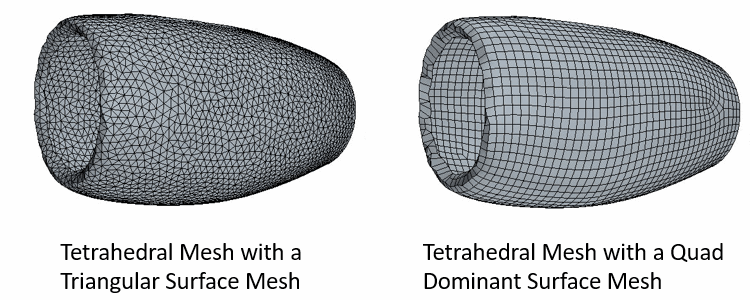Tetrahedral Mesher
Tetrahedral meshes provide an efficient and simple solution for complex mesh generation problems.
Out of the three provided models, the tetrahedral is the fastest and uses the least amount of memory for a given number of cells. Multi-part or multi-region meshes with a conformal mesh interface are allowed.
The tetrahedral meshing model utilizes the tetrahedral cell shape in order to build the core mesh. In Simcenter STAR-CCM+, the Delaunay method is used to construct the mesh, which iteratively inserts points into the domain, forming high-quality tetrahedra in the process. The resulting mesh strictly conforms to the triangulation of the surface at the domain boundary, so the quality of the original surface mesh must be good to ensure a good quality volume mesh. When you generate a tetrahedral mesh from a quadrilateral surface mesh, pyramidal cells are created to transition from quadrilateral surface cells to triangular cells for the tetrahedral mesh. If you are using a quadrilateral surface mesh with the tetrahedral mesher and prism layer mesher, the surface mesh must contain isotropic quadrilateral elements only.
An example tetrahedral core mesh, using either a Triangular or Quad Dominant surface mesh, is shown below:

Cell sizes in the core mesh are governed by the Volume Growth Rate that determines how quickly cell sizes increase with increasing distance from the surface. Volumetric controls that are chosen from a range of prescribed shapes can also be included to set a specific cell size locally. The Volume Growth Rate also governs the rate at which cells grow from refinement zones to core mesh.
When the tetrahedral mesher is used with a periodic interface, it attempts to produce a conformal mesh for the boundary pair where possible.
Tetrahedral Mesher Expert Properties
The tetrahedral mesher expert properties that are common with the polyhedral mesher are documented in Volume Mesher Controls and Values.